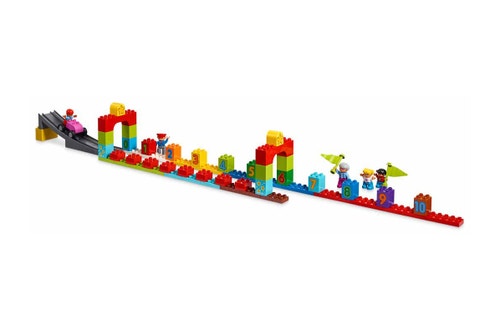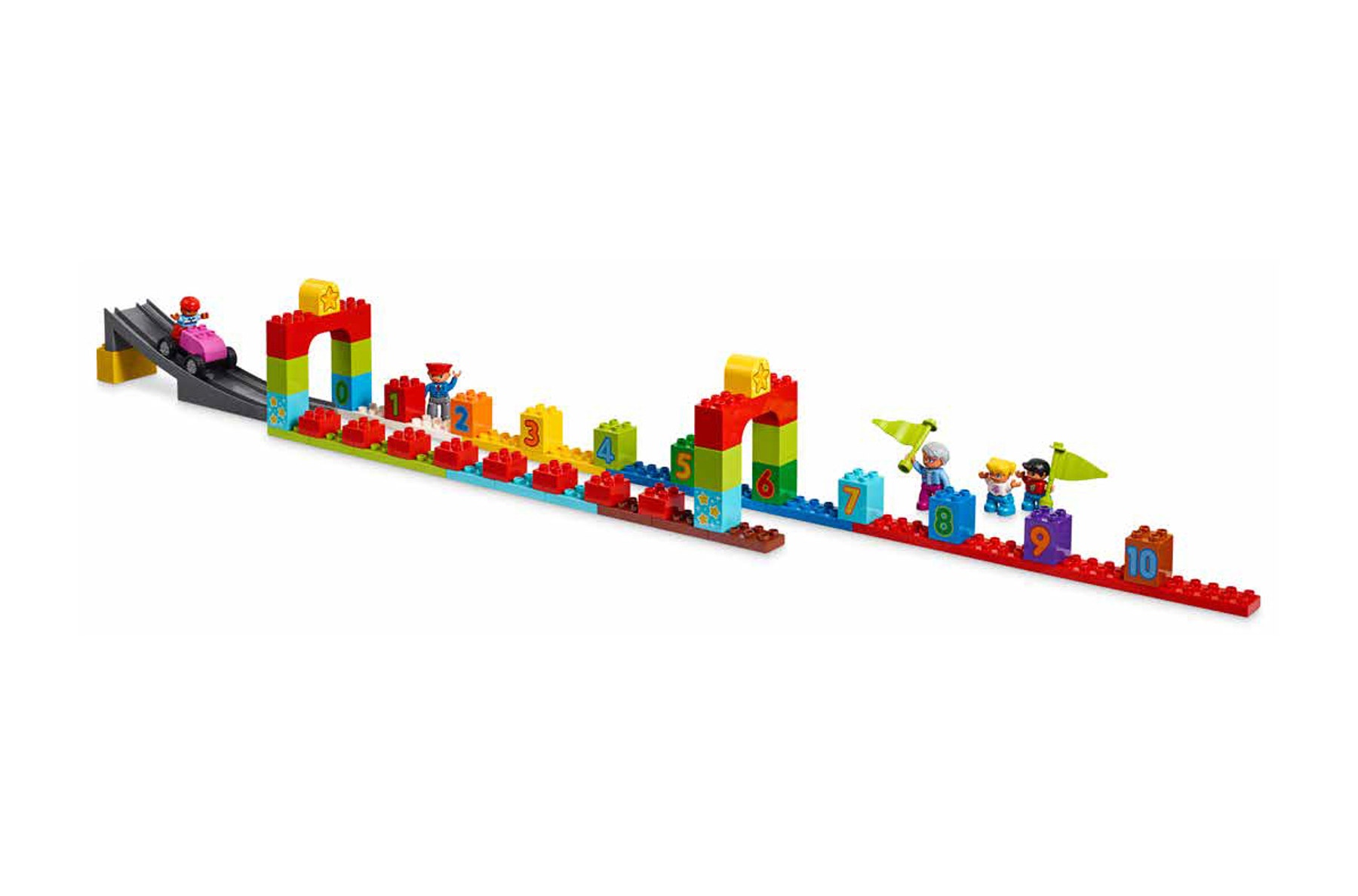Ramps
In this lesson, children will learn about how and why things roll, and predict and measure distances using non-standard units.

The Science behind the Play (Notes for Teachers)
Several factors will cause an object to roll or slide, beginning with a force (i.e., a push or pull) that acts on the object. Gravity is a force that pulls objects toward the earth or down a slope.
The shape of an object affects how it moves down a slope. Objects such as balls, which do not have corners or edges, will roll. Other objects will tend to slide rather than roll due to their shape. Size and texture determine the speed of rolling or sliding.
Connect
Ask the children to describe what it is like to go down a slide.
Discuss why/how people move from the top to the bottom of a slide without using their bodies to assist them. In other words, explain that people move down a slide because of gravity, which is a force that pulls objects toward the earth.
Tell the children that you are going to read the beginning of a story about a group of people who are preparing STEAM Park for its daily visitors. You can show them the inspiration photo or use the figures to act out the scene.

Read the following story aloud:
Parker, the park manager, wants to build a new ride for visitors to enjoy. He asks his neighbor, Ms. Engels, and her grandson Arty and Arty’s friends Sienna and Matt to help.
“Let’s build a ramp and some cars to ride down the ramp,” Parker said.
“I have an idea! Let’s place a line of numbers at the bottom of the ramp and guess how far the cars will roll!” Arty said.
“Great idea! We can try it out and see what works the best,” Ms. Engels said.
Construct
Tape or glue all six pages of the track template together to comprise the entire length of the track.
Working in pairs or as a group, ask the children to take turns placing the bricks to build the two smallest ramps and the sides of the track as shown in the inspiration photo. Make sure the children place the number bricks in the right places.
Position the smallest ramp on the track template and ask the children to take turns rolling the cars or objects down the small ramp, then try with the bigger ramp.
Use a pencil to mark where each car stopped. You can use different marker colors to represent the different cars or objects.
Show the children how to record the result of each roll on their graphs. Make sure they understand that there is a separate graph for each ramp size.
Tip:
Each child should have four different results graphs, one for each ramp. This is so they can compare how far the cars or objects will roll after going down each ramp.
Contemplate
Ask the children to predict how far a car or object will roll.
Consider asking questions like:
- Will it stop between numbers 3 and 4?
- Will it roll all the way past number 10?
- Were your predictions correct?
- Does it become easier to predict where the car or object will stop after observing or watching what happens a few times?
Continue
Consider asking questions like:
- How can you make a car go faster?
- How can you make a car roll farther?
Ask the children to build the large ramp that is shown on the in-box building inspiration card. (They will need to use the pieces from the smaller ramps.)
Tell the children to test the ramp by rolling cars down it, then challenge them to build a car that rolls past the number 10.
Tip:
See the image of the larger vehicle in the appendix.
Did you notice?
Observing the following skills can help you monitor whether the children are developing the necessary competencies in science, technology, engineering, art, and math.
- Using technology such as simple gears and wheels in appropriate ways
- Asking questions about science and technology related concepts
- Making predictions.
- Experimenting/testing “what would happen if” questions
- Observing and describing what happens
- Recording data using graphs
Öğretmen Desteği
Children will:
- Observe what happens when they place objects on a ramp
- Make predictions
- Measure how far objects move
- Record data using graphs
Pencils
Glue or tape
Scissors
Children are able to:
- Use technology such as simple gears and wheels in appropriate ways
- Ask questions about science and technology related concepts
- Make predictions
- Experiment/test “what would happen if” questions
- Observe and describe what happens
- Record data using graphs